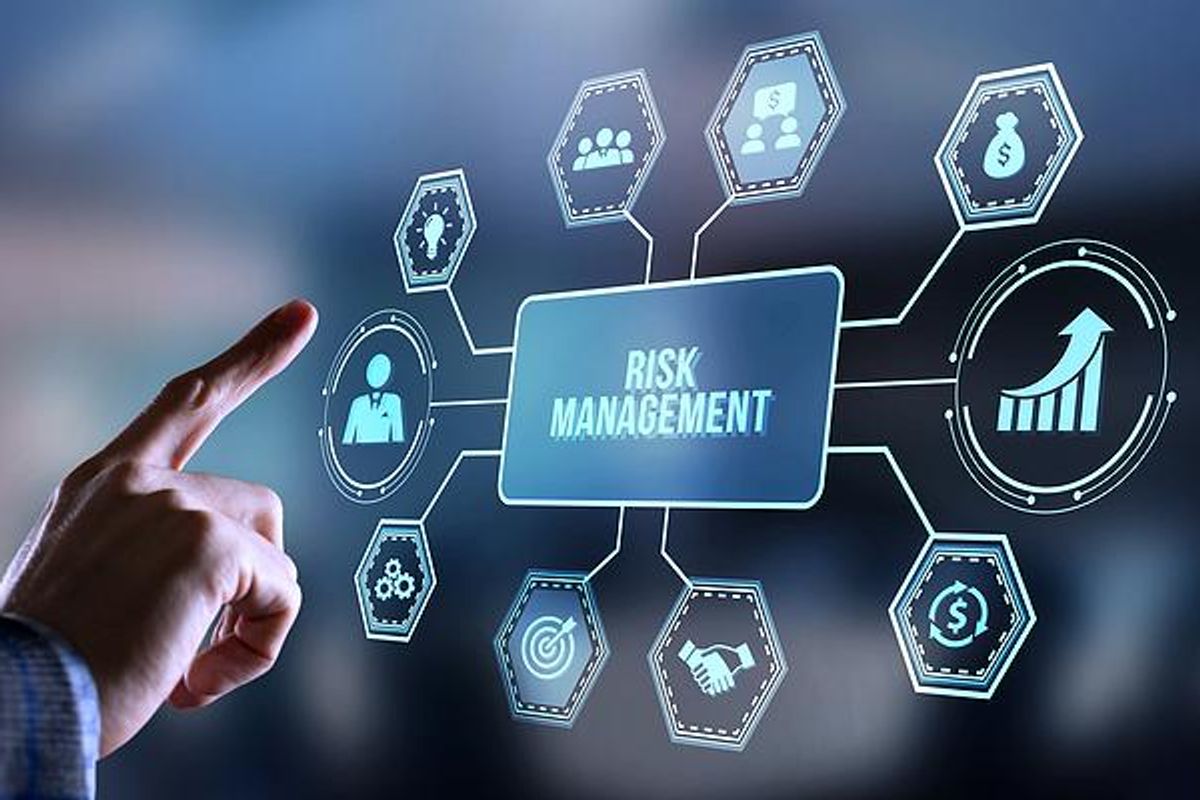4 Ways Technology Can Help Manage Your Business Risks And How To Leverage This Opportunity

At one time, I was part of a working committee that reviewed a risk event that resulted in a material financial loss and regulatory sanction to an organization. The company got sanctioned for non-compliance with the Know Your Client (KYC) requirement caused by a gap in the manual risk management procedures. This event would probably have been mitigated if the KYC checks and controls process were automated.
For example:
- Have you thought of how an application can automatically identify KYC risks by navigating multiple systems to review client information and identify inconsistencies? And how this process can save your organization from a loss of funds and prevent regulatory sanction?
- Can you imagine how much time and money will be saved by automating risk routine credit management checks with a technology solution that can establish and predict customers’ credit behavior based on past data and trends?
- How about the additional value that risk managers will contribute to achieving organizational goals by focusing on strategic tasks if routine risk management processes are automated?
Technology has tremendously impacted almost every aspect of life and business. Risk management is affected because its implementation relies on business data and processes. Results from the Deloitte GRM survey showed that institutions had recognized the potential of the latest technologies to manage risk and increase efficiency in business processes. Cloud computing (46%), RPA (29%), and machine (27%) were most of the commonly used tools by respondents. Despite this, relatively few institutions reported deploying these tools.
This article will present why there is a need to leverage technology for risk management and the types of technologies used for managing these risks.
Importance Of Technology Risk Management

Bigstock
- Trend Analysis & Risk Prediction - Risk management technology solution facilitates data analysis to identify trends and make risk predictions to support decision-making by analyzing data relevant to risk management to pinpoint behavioural patterns.
- Easier Risk Identification, Monitoring & Escalation - Technology solutions that support risk management simplifies the risk identification and monitoring process. In the case of an anomaly or exception, issues are promptly identified and automatically reported to the right people for appropriate action.
- Scalability and Operational Efficiency - Using risk management technologies help scale up, handle workload spikes, and increase the consistencies and correctness of risk analysis and predictions.
- Compliance - Risk management technologies help ensure procedures and regulations compliance. Technologies explicitly built to provide companies with an insight into trends will help ensure that the organization is abreast of all the industry requirements.
Risk Management Technologies

Bigstock
- Cloud Computing is the on-demand delivery of technology resources over the internet. Instead of buying, owning, and maintaining physical data centers and servers, technology applications and services are accessed on an as-needed basis from a cloud provider. Cloud-hosted risk management software helps organizations reduce exposure to risks and minimize losses through better data management. Adopting cloud-based risk management applications provides an organization with a more efficient and cost-effective alternative to buying and running an in-house risk management application.
- Robotic Process Automation (RPA) - RPA is a form of business process automation that involves defining a set of instructions for a robot or 'bot' to perform. RPA is about automating some repetitive tasks and processes in the workplace, e.g., copy-paste tasks and moving files from one location to another. RPA provides multiple benefits for an organization to manage its business operations effectively. One of the benefits is the reduction of the overall risk associated with business operations. Specific use cases RPA is adopting for risk management include the Know Your Customer (KYC) onboarding process where bots can retrieve customer data from regulatory agencies to support the onboarding process. It also uses limit management by supporting the identification of limit breaches for potential review by risk managers.
- Big Data Analytics - Big data analytics is collecting and analyzing large volumes of datasets to discover trends and identify to support decision-making. Data helps risk functions make better decisions. An example is to analyze customer information across various platforms to determine credit risk and the likelihood of default. From an operational risk standpoint, big data helps identifies risk areas in business operations to ensure proper risk management.
- Machine Learning & Artificial Intelligence (AI) - Artificial intelligence leverages computers and machines to mimic the problem-solving and decision-making capabilities of the human mind. AI is used to enhance risk management processes. For example, performing risk analysis using machine learning to analyze data from various sources and develop prediction models to help risk managers proactively manage and address risks. Also, AI facilitates risk reduction by analyzing historical data to identify behavioral patterns and translate them to risk predictors.
- Cybersecurity - Cybersecurity is a body of technology that protects internet-connected systems such as hardware, software, and data from cyber threats. Organizations in the cybersecurity space periodically publish emerging trends of cybersecurity breaches. Risk functions can leverage this information to gain insight into the risk associated with various technologies used for business processes and how they are managed.
Technology is a key enabler that supports the risk management implementation process; despite this, organizations should evaluate the pros and cons of technology solutions before implementation.
If you're interested in learning more about how risk management can help achieve your business, data, and technology goals or have any follow-up questions, please feel free to follow/connect with me on LinkedIn.
- 4 Critical Components To Risk Management Success ›
- Organizing Data Governance For Business Impact ›
- Executive Spotlight: The Technology Every Executive Needs To Know How To Use Right Now ›
- Signs Your Company’s IT Operations Are Failing - Work It Daily ›
- From IT Developer To Leader: My 25-Year Journey At Greyhound - Work It Daily ›

 Bigstock
Bigstock Bigstock
Bigstock Bigstock
Bigstock


